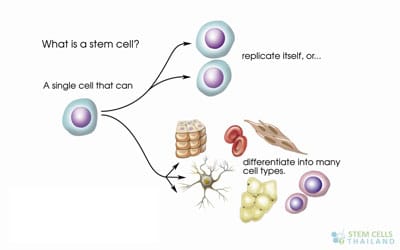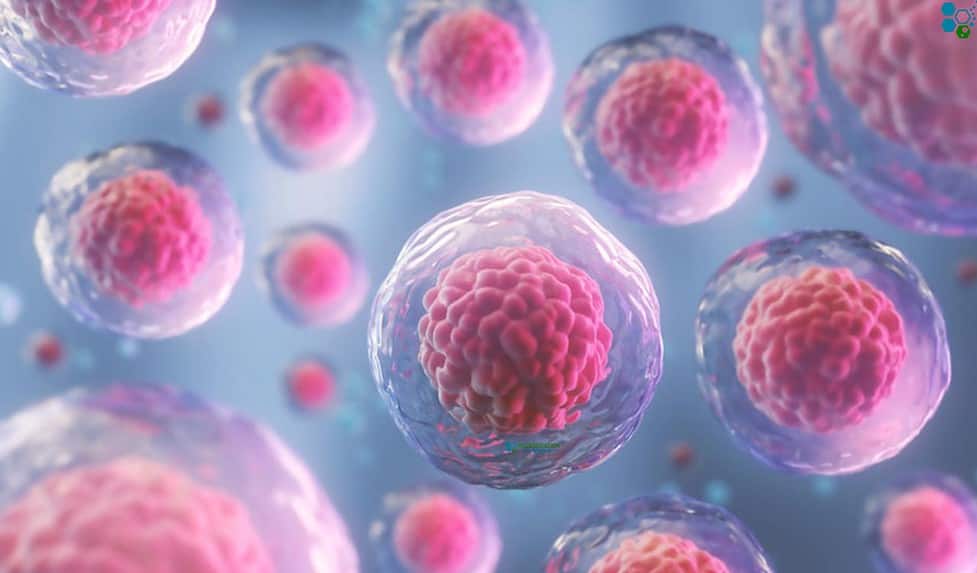Undifferentiated cells refers to a cell that has yet to develop into a particular cell variant. Undifferentiated stem cells are the very basic cells in biology that all other cells derive from. The very first few cells in an embryo are considered undifferentiated.[1]
Stem cells are basically undifferentiated cells that have the unique ability to produce many different types of cell lines. By the very definition large undifferentiated carcinoma cells lack either glandular or squamous differentiation.[2]
Undifferentiated Cells: The Building Blocks of Life and Medicine
The term is the opposite of differentiated cells and is usually used to help describe tissue or cells that have not used paracrine cell signalling to become specialized into a particular function or structures as adult stem cells. Undifferentiated cancer cells are dangerous and often grow and spread quickly.[3]

Undifferentiated cells, often referred to as stem cells, hold a unique position in the hierarchy of cellular development. Unlike specialized cells that perform specific functions, undifferentiated cells have the potential to develop into various types of cells. This feature makes them indispensable in both natural developmental processes and artificial interventions like regenerative medicine.
Types of Undifferentiated Cells
- Totipotent Cells: These cells have the capacity to differentiate into any cell type, including extra-embryonic tissues like the placenta. The zygote is a prime example of a totipotent cell.
- Pluripotent Cells: These cells can differentiate into all three germ layers—ectoderm, mesoderm, and endoderm—but not into extra-embryonic tissues. Embryonic stem cells are pluripotent.
- Multipotent Cells: These cells can differentiate into a limited set of cell types within a particular tissue or organ. Hematopoietic stem cells, for instance, can develop into various types of blood cells but not into other tissues.
- Oligopotent Cells: These cells can differentiate into a few closely related cell types. For example, lymphoid or myeloid stem cells can give rise to different types of lymphocytes or myelocytes, respectively.
- Unipotent Cells: These cells can only differentiate into a single cell type but can self-renew. Spermatogonial stem cells are an example.
Roles in Development and Tissue Maintenance
- Embryogenesis: Undifferentiated cells are critical during embryonic development, giving rise to the various cell types that constitute the body.
- Homeostasis and Repair: In adult tissues, resident stem cells serve as a reservoir for cell replacement, maintaining tissue homeostasis and facilitating repair after injury.
Applications in Regenerative Healthcare
- Stem Cell Therapies: Undifferentiated cells can be induced to become specialized cells that can be used to replace damaged or lost tissues.
- Tissue Engineering: These cells are instrumental in creating artificial organs or tissues that can be used for transplantation.
- Disease Modeling and Drug Testing: In vitro differentiation of stem cells can be used to model diseases and test potential drugs.
Ethical and Safety Concerns with Undifferentiated Cells
- Source of Cells: Particularly when it comes to embryonic stem cells, ethical concerns arise around the destruction of embryos.
- Tumorigenicity: The potential for undifferentiated cells to form tumors is a significant safety concern in clinical applications.
Current Research & Future Goals
- Improving Differentiation Protocols: Research is ongoing to develop more effective and controlled ways to guide the differentiation of undifferentiated cells.
- Personalized Medicine: The development of induced pluripotent stem cells from individual patients holds promise for personalized treatments.
Undifferentiated cells play a fundamental role in development, tissue maintenance, and treatment of conditions such as type 1 diabetes and renal failure. Understanding their properties and how to control their differentiation pathways will be critical for advancing medical science and healthcare.
Published Clinical Citations
[1] ^ Hu, Kexiang, Feihu Zhao, and Qingkang Wang. 2013. Mechanical characterization of living and dead undifferentiated human adipose-derived stem cells by using atomic force microscopy. Proceedings of the Institution of Mechanical Engineers. Part H, Journal of engineering in medicine, no. 12 (September 17). doi:10.1177/0954411913503064. https://www.ncbi.nlm.nih.gov/pubmed/24044923
[2] ^ Louthrenoo, W, S Boonyaratavej, R Sittiwangkul, and W Sukitawut. 1998. Anti Ro/SSA positive undifferentiated connective tissue disease in a mother with a newborn with complete congenital heart block: a case report. Journal of the Medical Association of Thailand = Chotmaihet thangphaet, no. 8. https://www.ncbi.nlm.nih.gov/pubmed/9737117
[3] ^ Watthanaworawit, Wanitda, Paul Turner, Claudia Turner, Ampai Tanganuchitcharnchai, Allen L Richards, Kevin M Bourzac, Stuart D Blacksell, and François Nosten. 2013. A prospective evaluation of real-time PCR assays for the detection of Orientia tsutsugamushi and Rickettsia spp. for early diagnosis of rickettsial infections during the acute phase of undifferentiated febrile illness. The American journal of tropical medicine and hygiene, no. 2 (June 3). doi:10.4269/ajtmh.12-0600. https://www.ncbi.nlm.nih.gov/pubmed/23732256.

